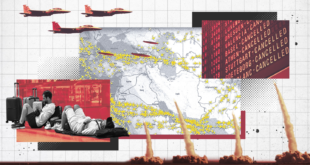Introduction
Over the recent years, terrorism has taken a paradigm shift in the manner in which terrorist execute their attacks. Unlike in the past, where terror groups would come out as an organized sect with a defined objective known all over the world, the recent past forms of terrorist acts are queer in the sense that they defy the traditional perception of what the world knew as terrorism. With numerous changes in trends of terrorism, this paper seeks to shed more light on the terror trends, including Lone Wolves, Suicide Bombers, and the Islamic State.
Additionally, it will look critically at the various studies and articles with an in-depth analysis of the activities of the terror groups herein discussed. Moreover, this essay will offer a critical analysis of the past development of the terror groups to the present.
Analysis
In the fight against terrorism, governments worldwide have deemed it imperative to study the development of the terror groups to understand their operations to find intelligent ways of curbing their activities. Therefore, it is essential to understand and classify the three major categories of the terror groups that have, over a long period, causing mayhem among the population all over the globe. In the first place, the term Lone wolves have become one of the significant concepts that have been used to fathom the shift in terror activities. After realizing that substantial terror groups were rapid to identify and study, most of the terror groups resorted to unpredictable ways and thus the concept of Lone Wolves.
The term Lone Wolf refers to individuals who have resorted to executing terror acts alone as single entities (Mara, 2016). However, their idea of committing such terror acts is informed by the broader context of the ideologies supporting radical extremism. Michael (2012) asserts that leaderless resistance has become the new order of terror. It is a deviation from the traditional forms of terrorism in which there existed formidable terror groups that had structures of organizations. The increased number of Lone Wolf attacks in the United States of America came from all spheres of life.
Each of the attacks reported illustrated that the attackers were acting in the expression of their displeasure with the various issues they did not agree with, particularly those that attracted the government’s interest. It is, therefore, significant to note that what essentially triggers lone wolves to indulge themselves in terrorism is disagreement with the government or the broader public on issues they feel should be addressed otherwise. Before opening fire and shooting at police officers in Pennsylvania, Poplawski, a young man, expressed a full racist view on social media on the internet. From such an instance, it is worth noting that some of the attacks are elicited out of the sheer expression of displeasing feelings at extreme levels that triggers acts of terror.
Despite the rise in some sporadic terror attacks, some of the observers of the bombings dismiss that the concept that some of the ambushes are in one way or another linked to the more significant terror groups’ ideologies. Given the increased terrorism incidence, they assert that individuals executing the attacks on fellow public members suffer from abnormal psychology. It is critical to make the case in corroborating their assertion. A keen follow-up on the medical history of the attackers indicated that they had medical records indicating psychological instability (Reid &Yakeley, 2014). Though some of the attackers have had previous psychological conditions, it does not justify cases where the attacker had no last mental states. Additionally, it is not apt to assert that all the attackers in one way or another have psychological conditions, even in cases where solid fundamental beliefs inform the attackers.
Apart from the lone wolves, suicide bombers have massively become a threat in the recent past all over the globe. The trends in suicidal bombings illustrate it stems from various radicalized religions (Jeffrey, 2013. Religion plays an integral role in cases where attackers view other faiths as inferior or irrelevant hence their extinction is the ultimate thing to pursue. Over so many years, Islam has been associated with violent extremism due to the acts committed by some Muslims. From the teachings of the divisive ideologies regarding the beliefs, suicide bombers can react in violent ways that may ultimately lead to terror acts. The gist of suicide bombings reported stems from radicalized views that premise on ideological differences. One of the terrorist groups in the world today is Islamic State (ISIS) (Haroro,2014). Therefore, it is imperative to fathom its legal foundations on which it was formed to understand how the militia groups work. Mara (2016) postulates that the terror activities of t groups such as the Islamic State attempt to justify their acts by offering a legal foundation based on the narrative entrenched in their Islamic communities. A typical example is that the caliphates who terrorize people believing it right to do so.
Acts of terrorism crop various reasons that attackers deem as their way of communicating their ideas, feelings stances on numerous issues in the social, political, and economic setting in which they exist (Robert,2003). The case of the Lone Wolf is a typical insight where attackers use terrorism to instill fear in people on their stance on political, social, and economic issues religion included. Moreover, in some instances, the psychological conditions of the attackers have contributed to the upsurge in terror acts (Ariel,2007). Apart from the fact that lone wolves are regarded as single entities, they represent a larger group of people, usually terror groups holding the same thoughts on the same issues. Additionally, religion mainly, Muslim has emerged as a radicalized religion over the years due to the narratives that inform it. Radicalization in faith to a large proportion contributes to the high prevalence rates of terrorism and the changed forms of terrorism that are widespread today.
Conclusion
It is evident that terrorism has undergone a significant transformation in the ways terrorists exhibit their tact in committing terror. Emergent of Lone Wolves, Islamic States, and suicide bombers are all part and parcel of the transformations that terrorism has undergone to find a place in the contemporary world still. However, if a proper understanding of the trends in terrorism is promoted, then amicable solutions can be reached at resolving the heinous acts of terrorism.
 Eurasia Press & News
Eurasia Press & News


